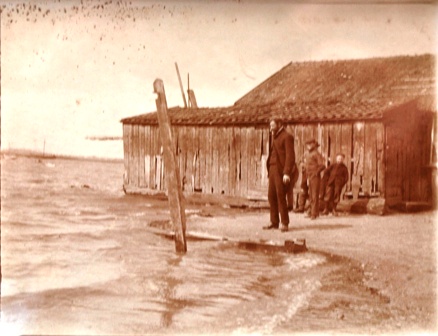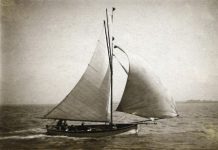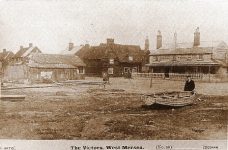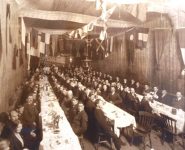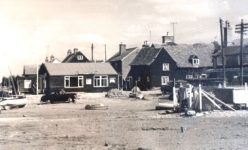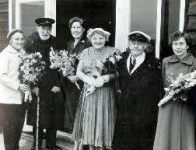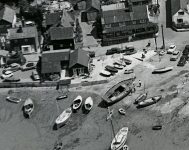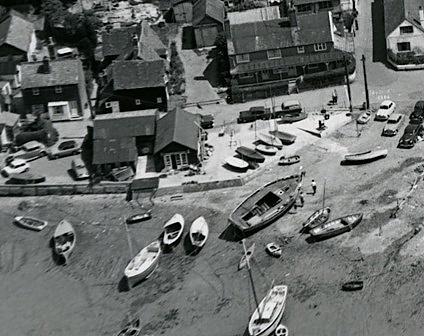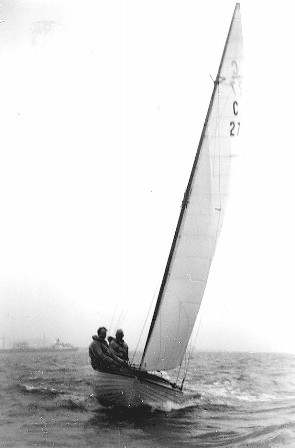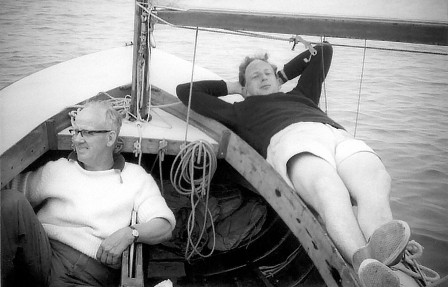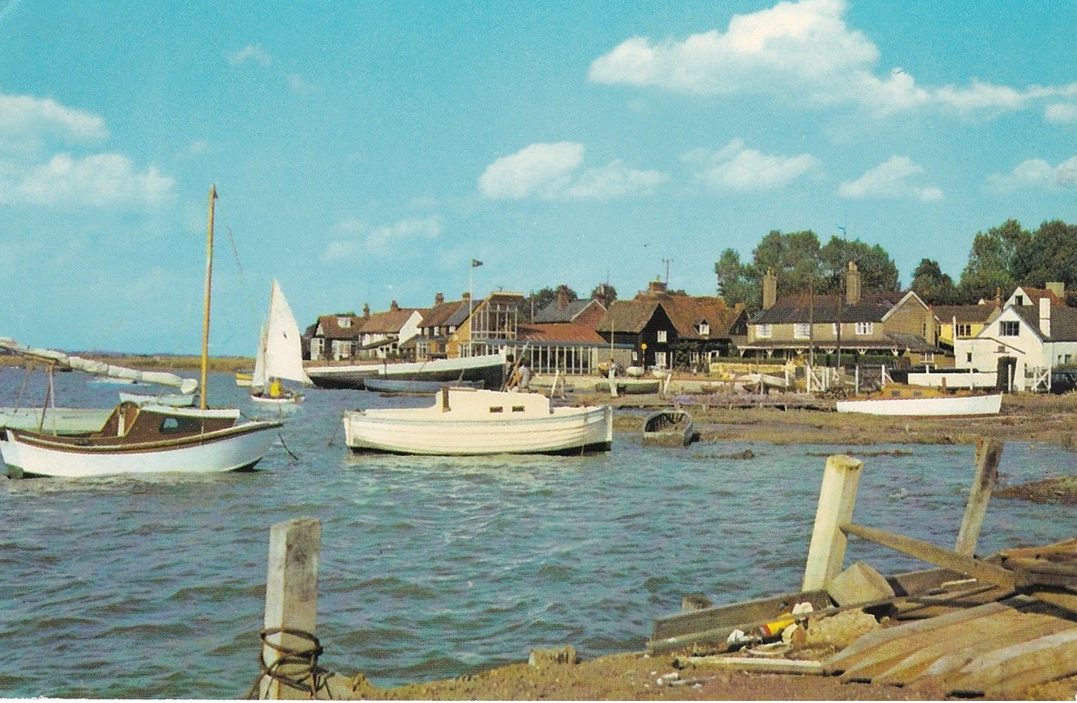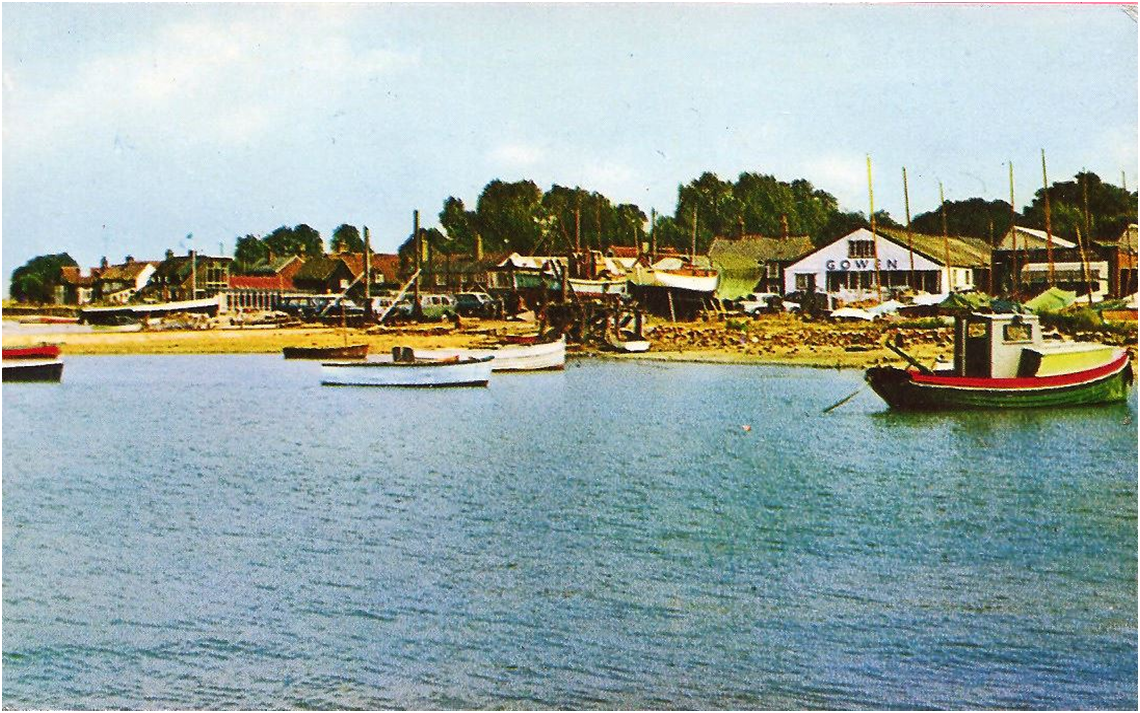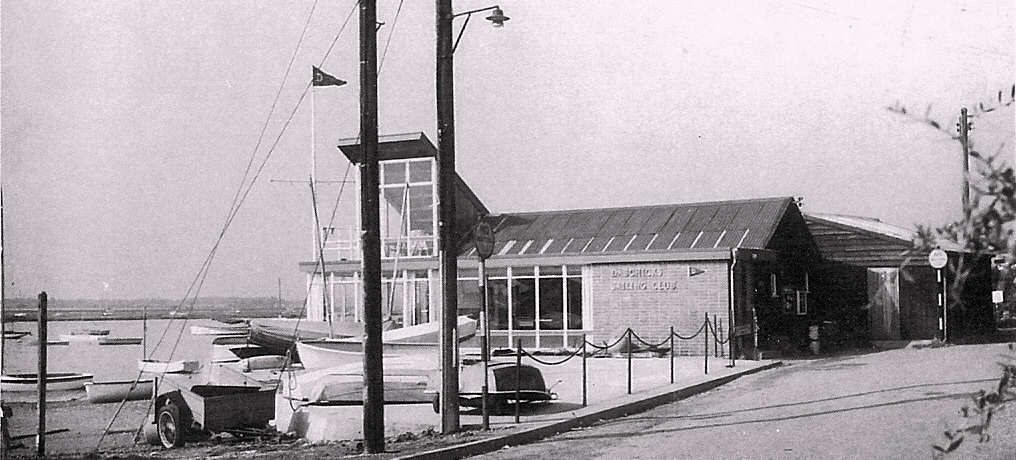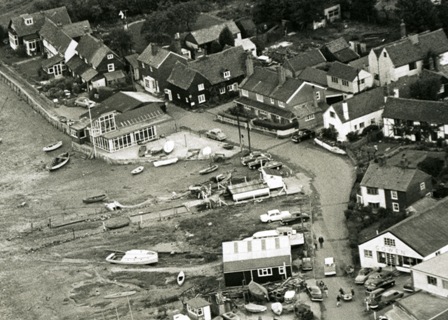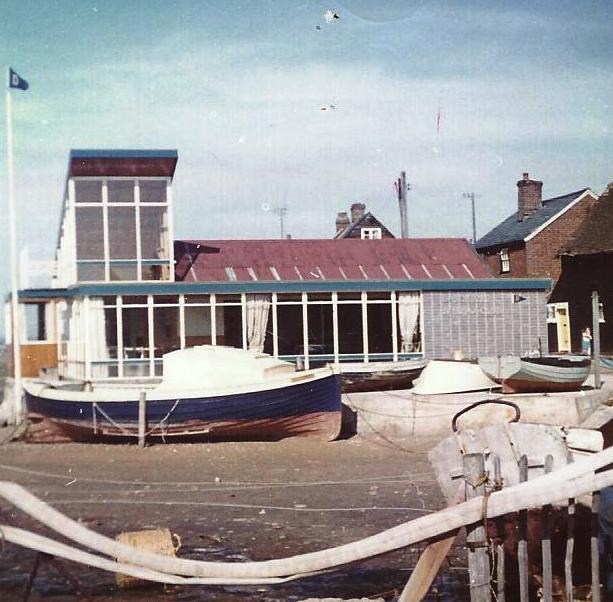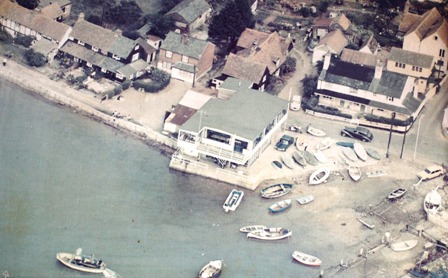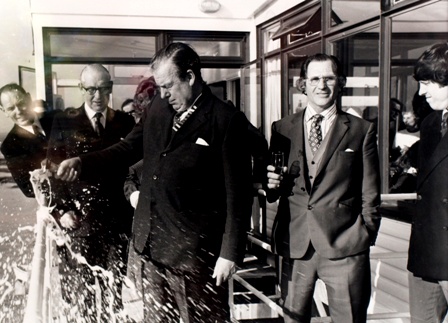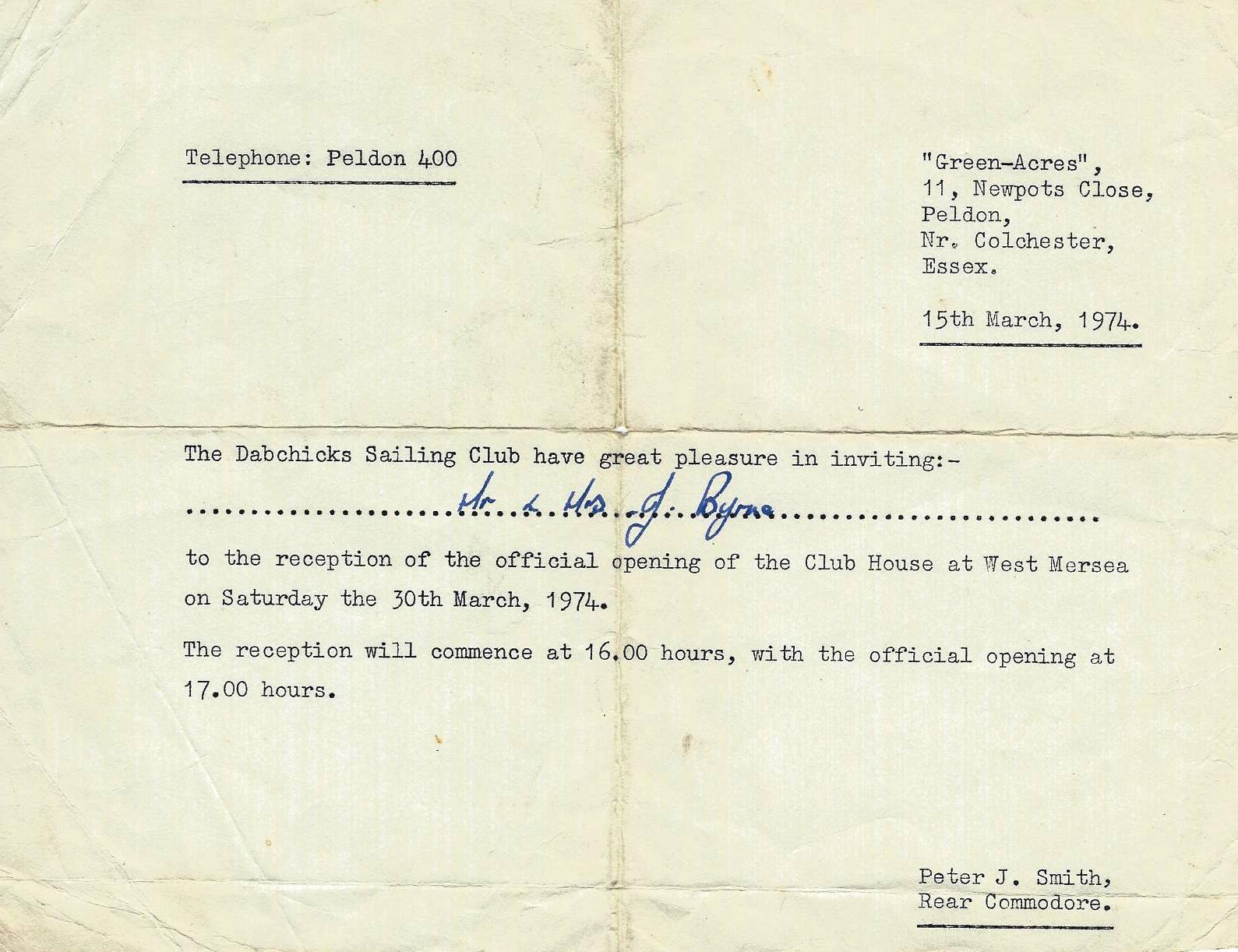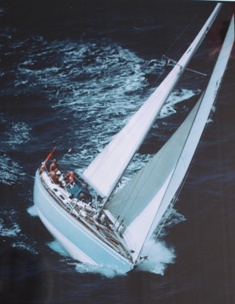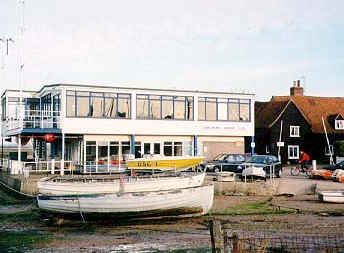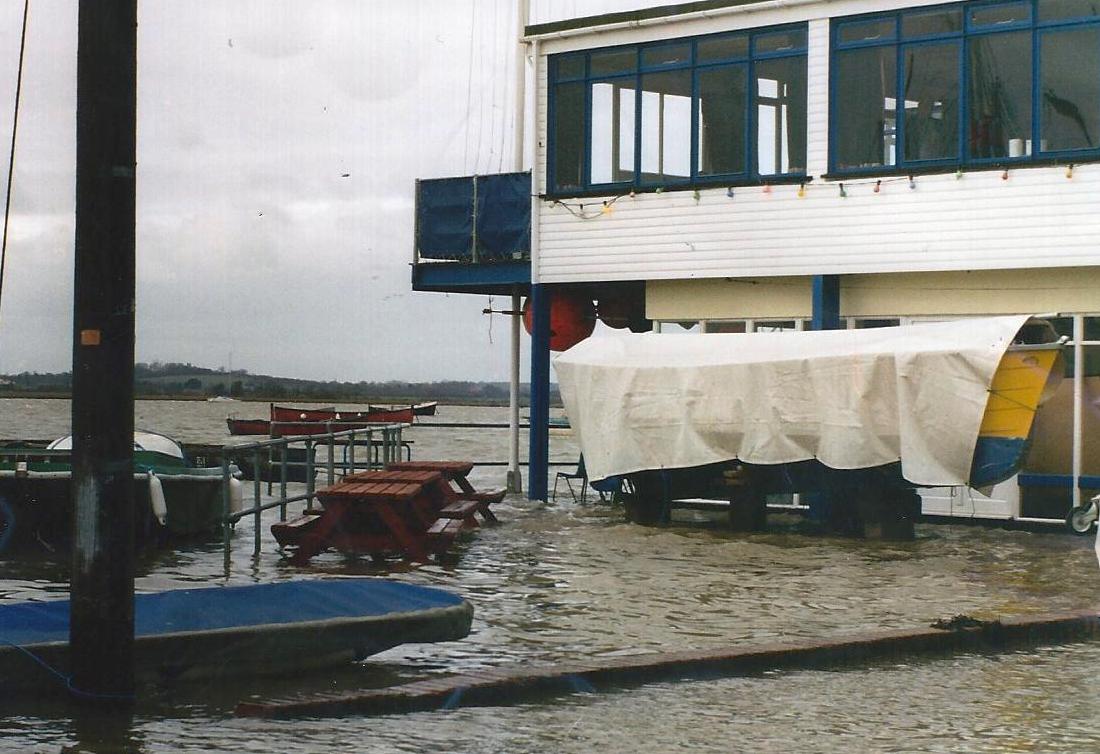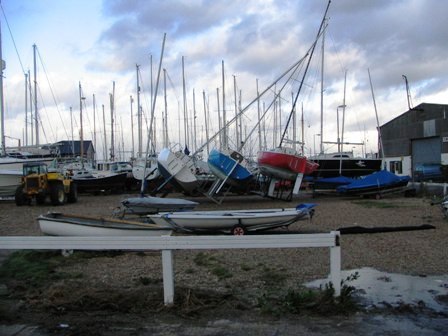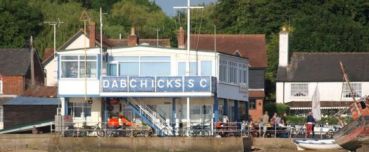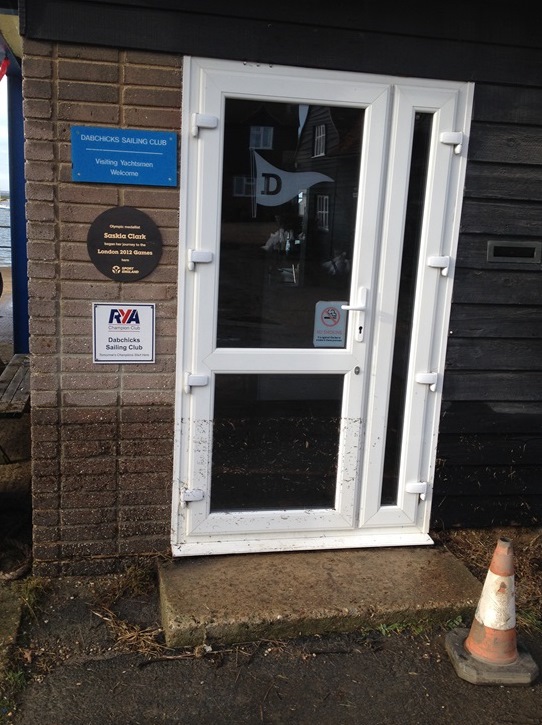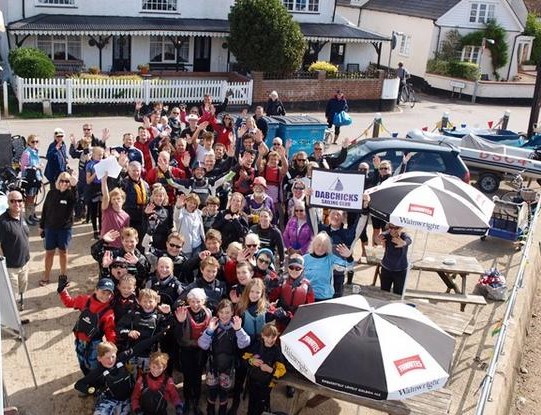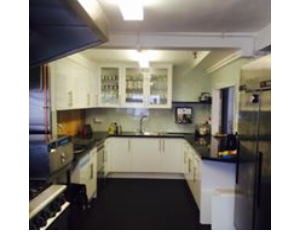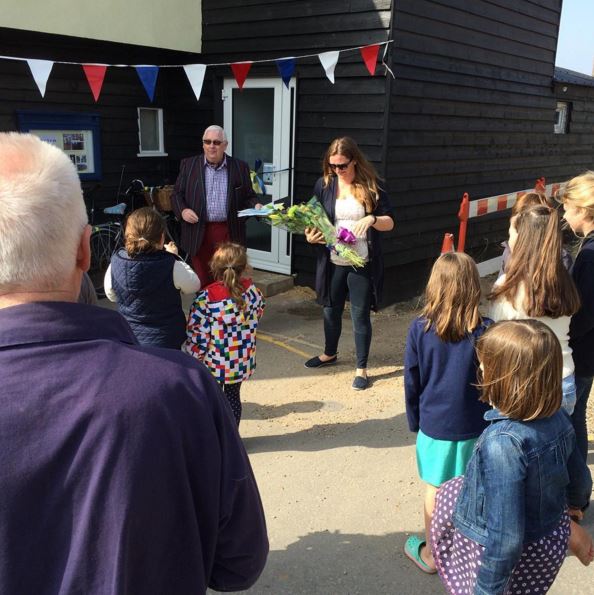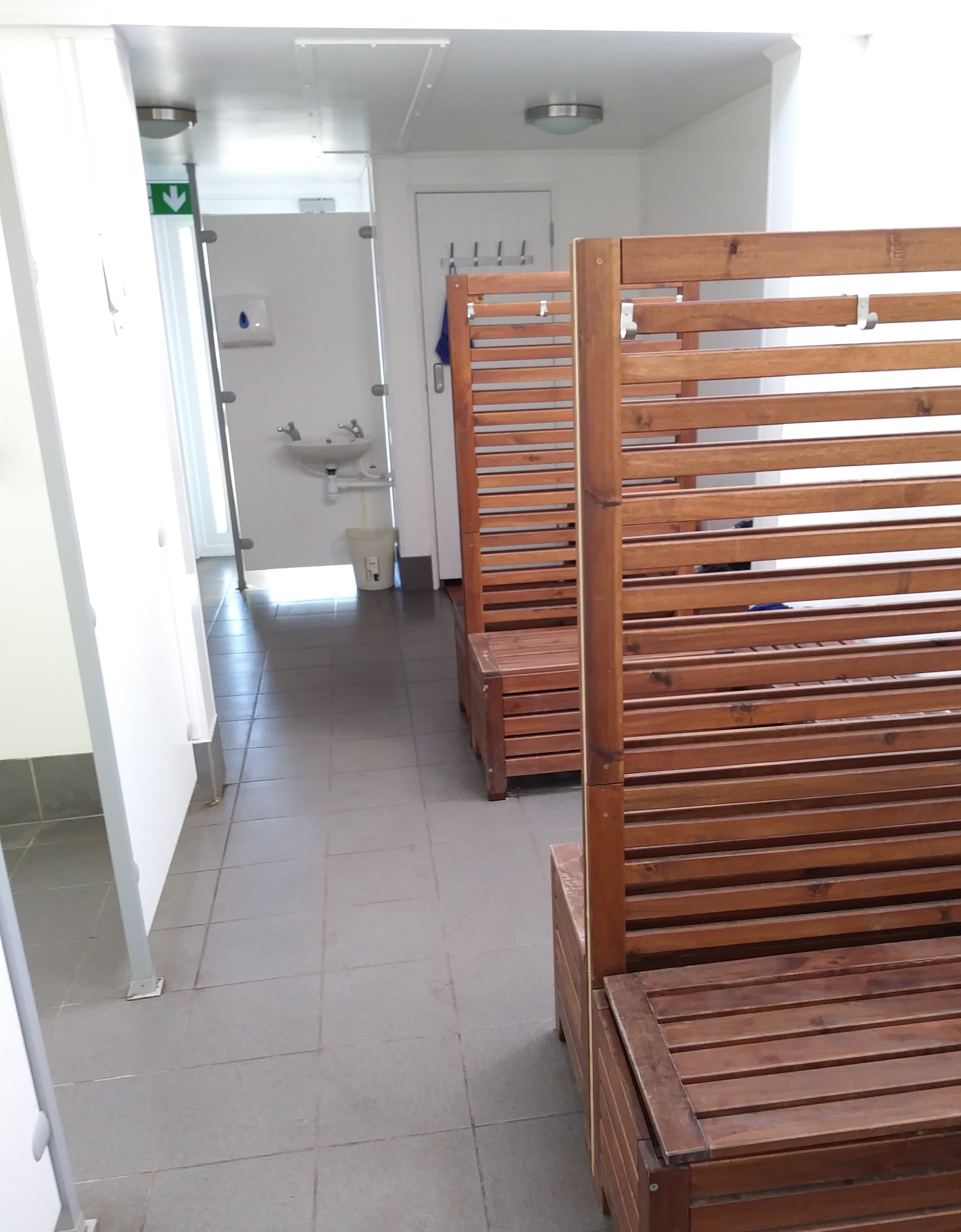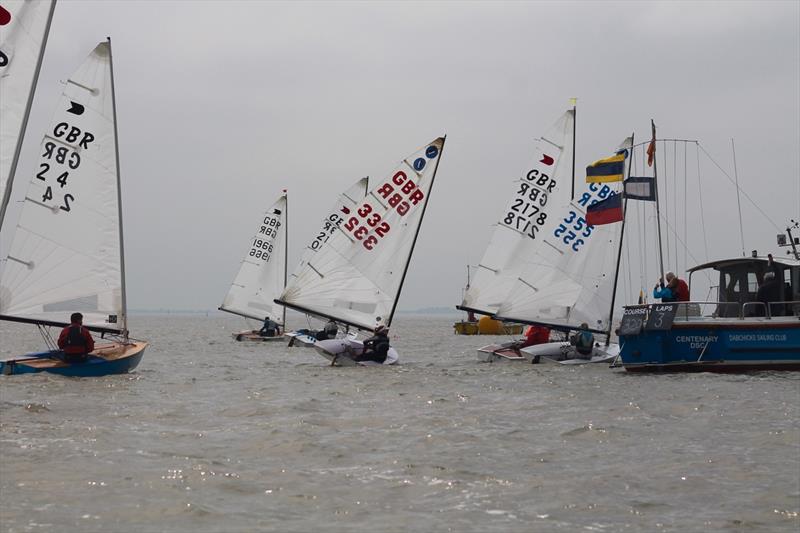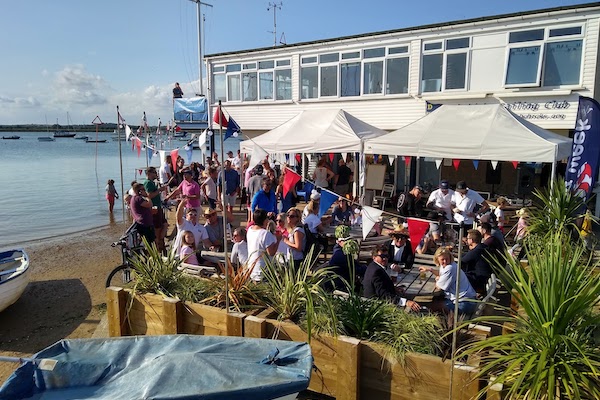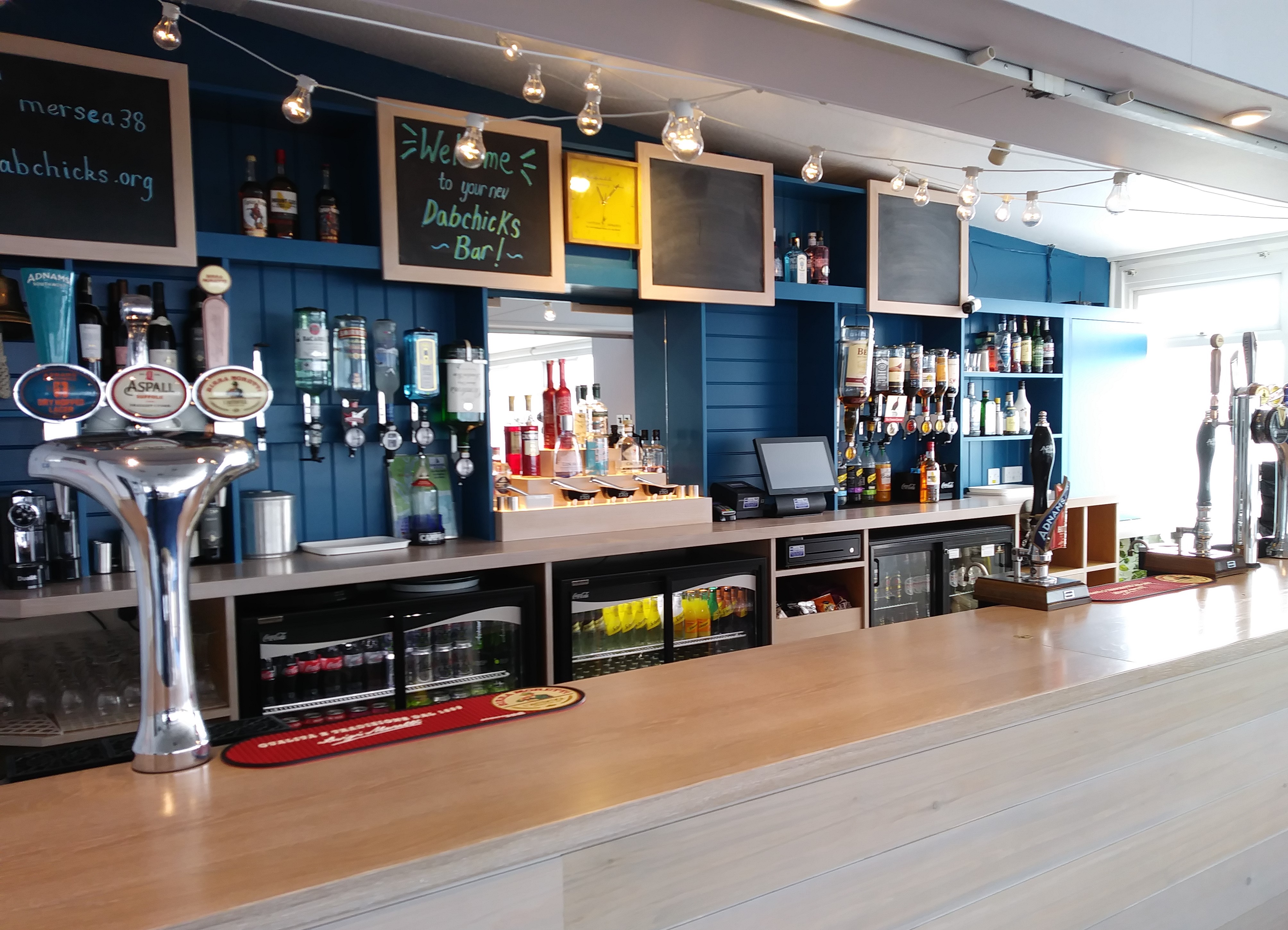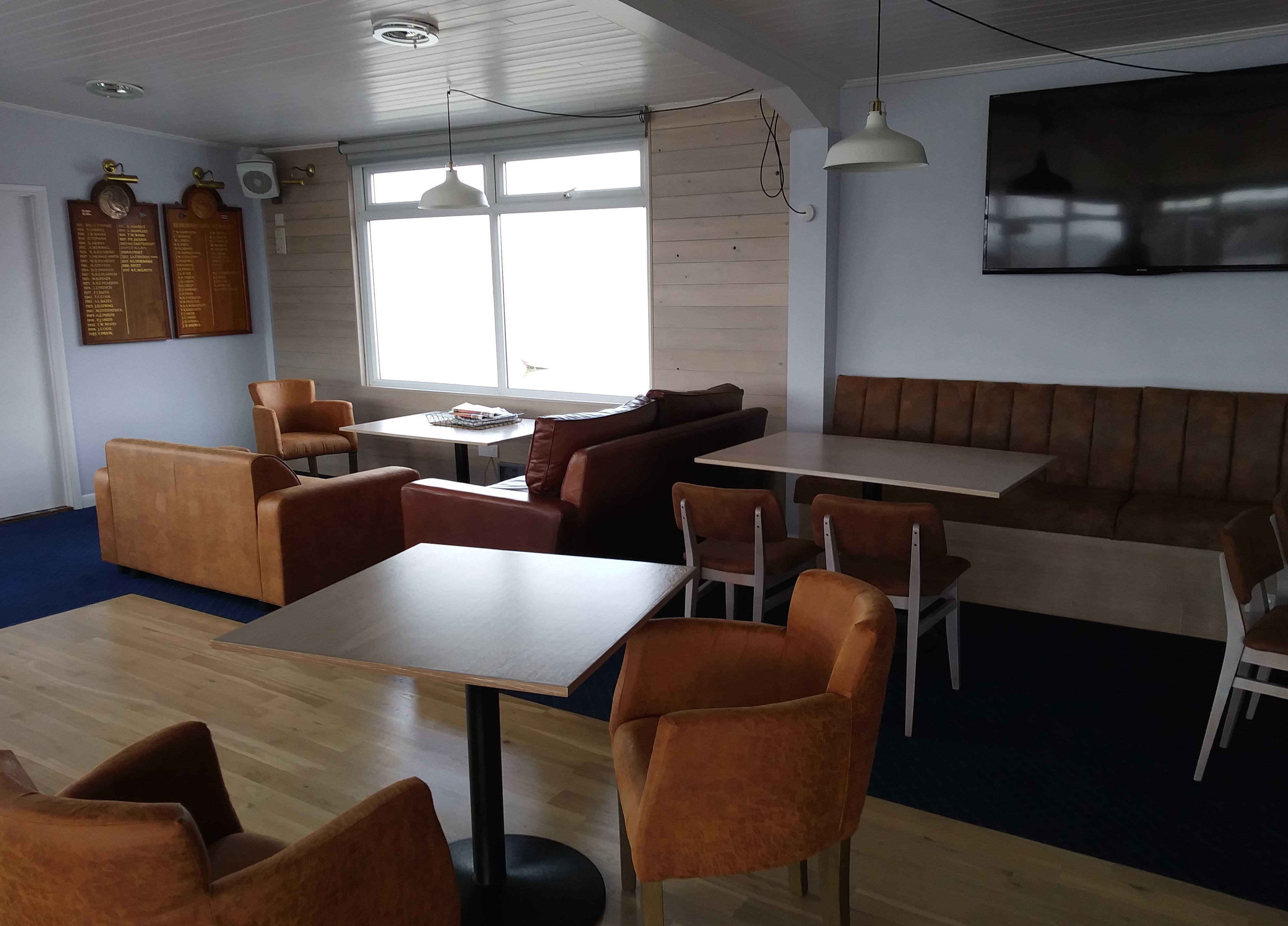A Sunday morning challenge led to Dabchicks Sailing Club
It is hardly surprising that with sailing waters such as ours and a local community who earned their living from the sea, that the early years of the last century should see the formation of a Club where competitive sailing would be encouraged in the Corinthian spirit which now seems to epitomise that era just before the First World War.
The Idea Hatches
Bill Wyatt, owner of the boat Mersea Hard and J. Smith, chief coastguard officer (known to fishermen as Admiral Smith) and owner of Alice, challenged each other on one Sunday morning to race – the loser to pay for drinks at the old Victory.
The idea of racing developed during the following year when several boats took part. There was Junk owned and sailed by G. Stoker and S. French, which had no centre box, a keel having to be screwed to her for each race. There was Kate, owned by Trim and raced by Clarke Mussett; Katie, owned by Digby and sailed by Junky Mole: Scallywag sailed by H. Welham; Blue Bird, sailed by Rab Cutts and Becky D’Wit; Rodger Roo, sailed by S French and Chum Hewes; and there was Hoppy Hewes in a sailing punt. These boats raced during the next three years, with Jess Pullen as starter and timekeeper.
May 20th 1911 – a meeting was held at the Victory Hotel to form a sailing club for small craft. It was decided that the club be named the Dabchicks Sailing Club and the following members were elected officers: the Rev. C. F. Yonge, Commodore; Capt. Harden, vice-commodore; H. Welham hon. Secretary; W. Trim, hon, treasurer – with Messrs. Ben Hewes, A Mussett, Sam French, G. Littleshales, H Banks junior, A Stoker, C Mussett, F. Wyatt, J Mussett, H. Hewes, William Wyatt, C. Hewes, C. Woods on the committee. Jess Pullen was starter/timekeeper.
When racing duly started money prizes were given to facilitate the purchase of beer, but on one famous occasion a pig was presented as a prize for a race down to the Meets, across South Shore and up to Shingle Hills. Many boats competed and a large number of spectators (including the lady who had graciously donated the pig) stood on Hove Hill to witness the event.
Mersea Hard sailed by E. Wyatt, was leading Blue Bird, sailed by Becky D’Wit, but when she rounded Shingle Hills buoy she came across the Nass. Blue Bird went round Nass Beacon – the set course – and made a protest against Mersea Hard. The pig was presented to Blue Bird, who subsequently bore on her bow a pig painted by the late Jack Spurgeon.
At the end of the season a dinner was held at the Victory Hotel for men only. About 50 members attended. The reverend commodore concluded his speech with the words “And now the sailing season is over, all you dabchicks may go to your nests.”
1912 – The number of boats increased, by Lapwing, owned by T. Gabriel; and Ranie. A regatta was held for smacks and small craft.
1913 – Cups were presented by the Rev. C. F. Yonge and Captain Harden. A race to the Crabchicks Sailing Club at Brightlingsea was arranged, and the course set was round the white buoy which is rounded today when sailing to Brightlingsea Sailing Club.
1914 – A shotgun (a somewhat unusual prize for a race) was won by S. French in Rodger Roo (C. Hewes) and he went on to win the rose bowl presented by Captain Harden.
1919 – After the war the dabchicks were reformed with T. Gabriel as Commodore. The boats after much bailing out reappeared.
1920 – Many more boats were sailing in the events – O I Say, Mimms, Bally Boys, Teal, Naiad, Ivy, Victory, Blue bird (W. L. Fairbank). Crab (owned by Wilkinson), and Dona (owned by Gowan). Later, A Briscoe designed War Baby, which was sailed by his son. At the end of the season a dinner was held at the Hall Barn and a hundred members attended.
1921 – There was a further increase in the number of boats, and three classes were formed – Class 1, 11 boats; Class 2, 11 boats; Class 3, 13 boats. This year saw Hoppy in Bally Boys winning many races and Woodham Hewes decided to build a sailing punt.
1922 – The sailing punt was launched and named Amateur. She was sailed by Woodham and won the trophy presented by Richardson. Dinner held again in the Hall Barn and Bally Boys dressed overall, appeared on the stage.
1923 – Amateur was again in the news, this time winning a trophy presented by Mr. Dyson
1927 – The club continued strongly until many of the older boats and their owners retired before the faster craft that were now competing, and enthusiasm began to wane.
1928 – The club ceased to function.
1938 – The club was re-formed by W. Wyatt, H. Cutts, G. Hempstead, Reg Hempstead, Jess Pullen and S. French and all was well until war broke out again. Members included Captain Chatsworth Musters, C. W. A. Scott, the famous airman; and Bill and Cecil Barlow.
April 1946 – A meeting was held at the White Hart Hotel, Jim Banks and a small committee including three older members, H. Hewes, G. Stoker, and S. French (who was still with the club as starter/timekeeper in 1961) got the club going again.
1947 – With J. Banks as Commodore and A. Simmonds as secretary/treasurer, much progress was made. At the revived annual dinner at the White Hart there were 40 members present.
1948 – The season saw many new members and boats with D Topham as Commodore
1949 – G Hewes was Commodore, and in the sailing that year Leo Michael Smith, in his new B.O.D. Ruff won many trophies, and in the following year won the Colne Yacht Club’s points cup. Later, more BO.D.s were sailing with the club and a class was formed. Roy Robertson became social secretary.
1952 – A Wormall was Commodore
1954 – The boat shed was purchased for use as a club house and a great deal of work was put into this by Bruce Rainbird Commodore and his committee – not forgetting the late Bunny Unwin, who at this time was carrying heavy secretarial duties.
1955 – Produced the biggest day in the history of the club when Mrs Michael Smith along with Bill Wyatt, (shown second from the left in the photograph below) opened the new clubhouse in the presence of a hundred members.
1956 – March Hare, owned and sailed by Rodney Hill won the cross Channel race in his class.
1957 – Mr. L. Michael-Smith was commodore. The cadet class was adopted.
1960 – Bruce Rainbird Commodore The Enterprise class was adopted
Building Momentum
1961 – The new dinghy park was constructed at the expense of much hard labour. Harry Stevens the Commodore was observed swinging a 14lb hammer for many days. By now Dabchicks Sailing club was well established with 460 members, 20 Enterprises, 10 B.O.D.s, 6 Sea Rangers, 30 cruisers and many other types.
1963 – New club house was built
1974 – Commodore: J E French The upstairs accommodation was added leaving the building as it is today
1982 -Swan World Cup – Porto Cervo Sardindina – Mersea Pearl with all Dabchicks crew; Bill Newman (skipper), Stephanie Newman, John Haynes, Dave Royce, Tony Foster and John Gosling
1999 – Commodore: Anne Marfleet our first lady commodore
2004 – 29th February Flood Tide
2005 – Paul Jackson was presented with the RYA Community Award by HRH The Princess Royal
2006 – Dabchicks host the RYA Zone Championships
2007 – 19th January. 100 mph gale blows boats over in the dinghy park. BBC Weather World News reports, “the big clear up starts today after England and Wales was battered by the worst storm in 17 years”.
2008 – Ray Smith was awarded a MBE for services to sport and young people in Essex.
2008 – Dabchicks host the RYA Zone Championships

Beyond 100 Years ...
Commodore: John Fisher for our Centenary year as featured in Anglia Afloat
Lots of celebrations included the Centenary Ball held at East Mersea Hall 14th May. A new Mitchell 31, motor boat was also purchased and named ‘Centenary’ so Race Committee teams always had all the equipment they needed for running a wide range of race events.
In its Centenary year Dabchicks Sailing club had grown to around 750 members, with over 180 dinghies and 65 cruisers regularly taking part in racing or training events supported by a good number volunteer members in of RIBs, dory’s, and motorboats.
2011 June – Dabchicks hosted the Sonata Nationals
On the 5 December 2013 a large storm surge hit the east coast of the UK causing widespread flooding along the coast. This left a tide mark on the club house door, and complete flooding of the downstairs area.
2015 – February – The Galley was refurbished and future proofed after the damage caused by the flooding in last 2013.
2016 Saturday 2nd April Opening of the refurbished of the large changing room. Commodore Peter Fitt, thanked our contractors Matt & Rusty, and presented the Rear Commodore, Jojo Taylor with a bouquet for all her hard work in planning and project managing the refurbishment. Peter, then officially cut the ribbon to open the changing area for members to view.
The club continued to raise funds to complete refurbishment of the rest of the club’s ground floor, in particular the smaller changing refurbished in 2017.
2019 March – The club Bar and Bar Lounge were refurbished.
Acknowledgements
Thanks to the club Members, past and present, who have assisted in compiling this record. Simon Cutts for a number of the early pictures from the Cutts family collection, and others from Ron Green. Also thanks goes for the support and help of the Mersea Museum

